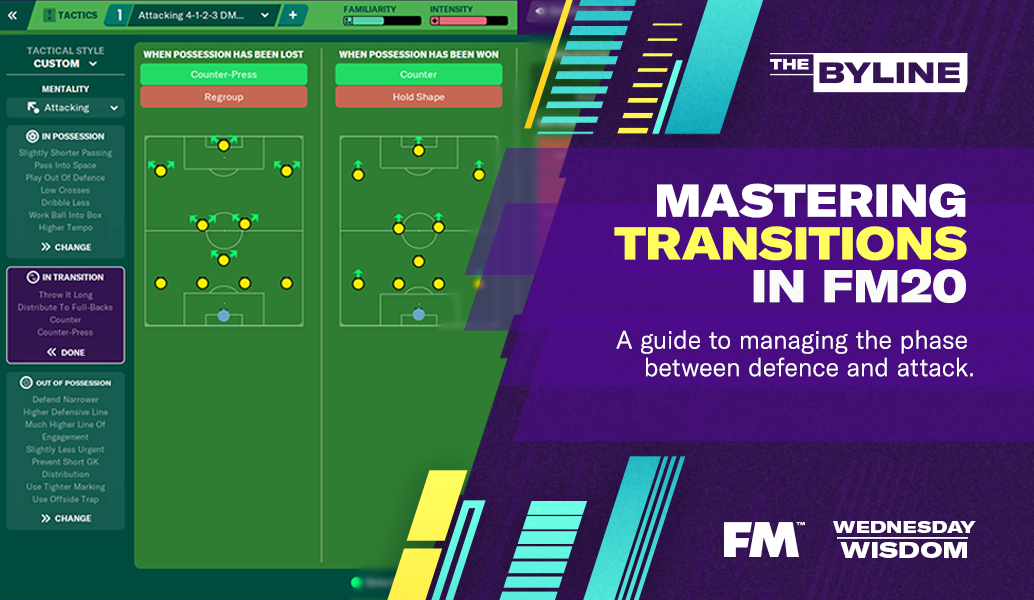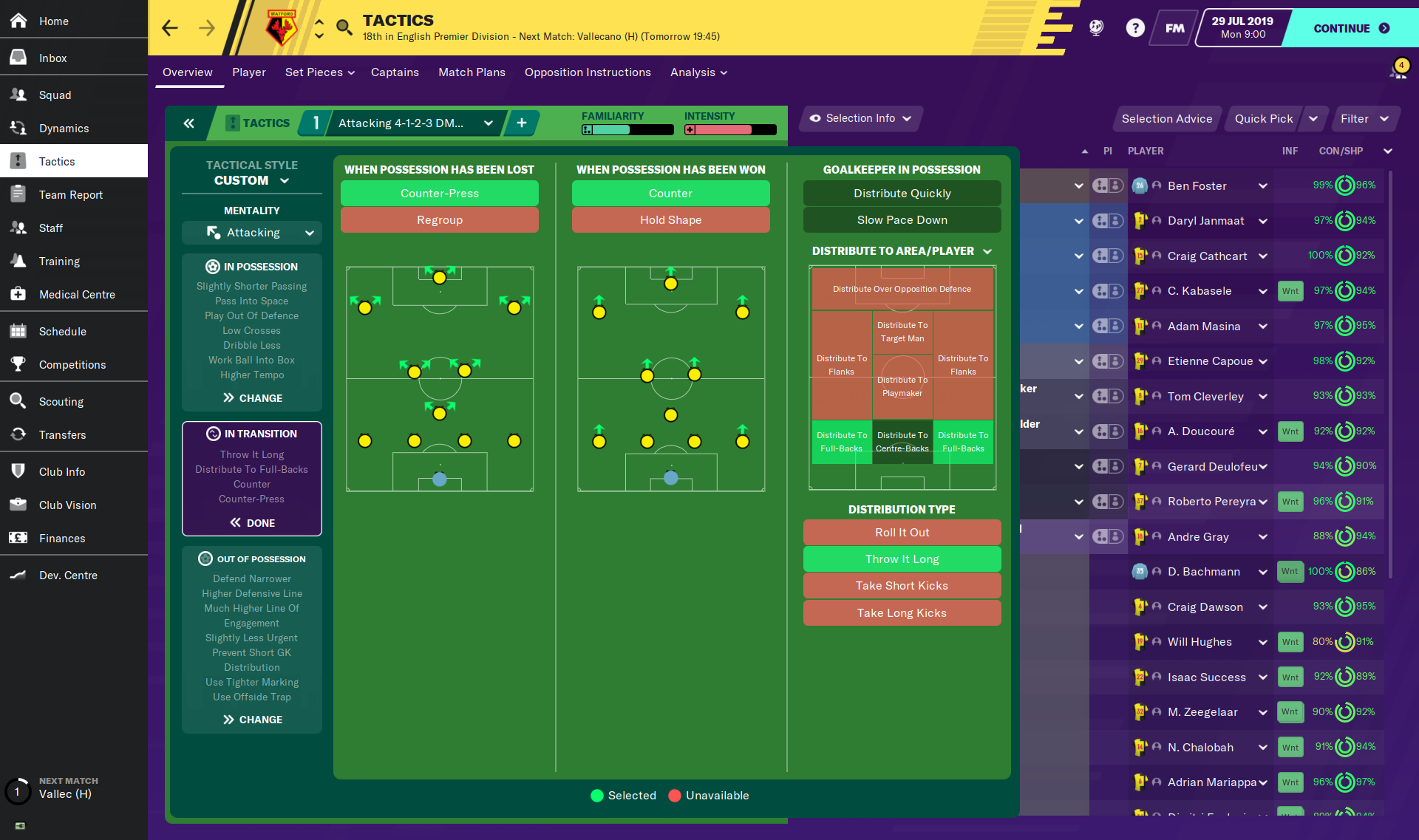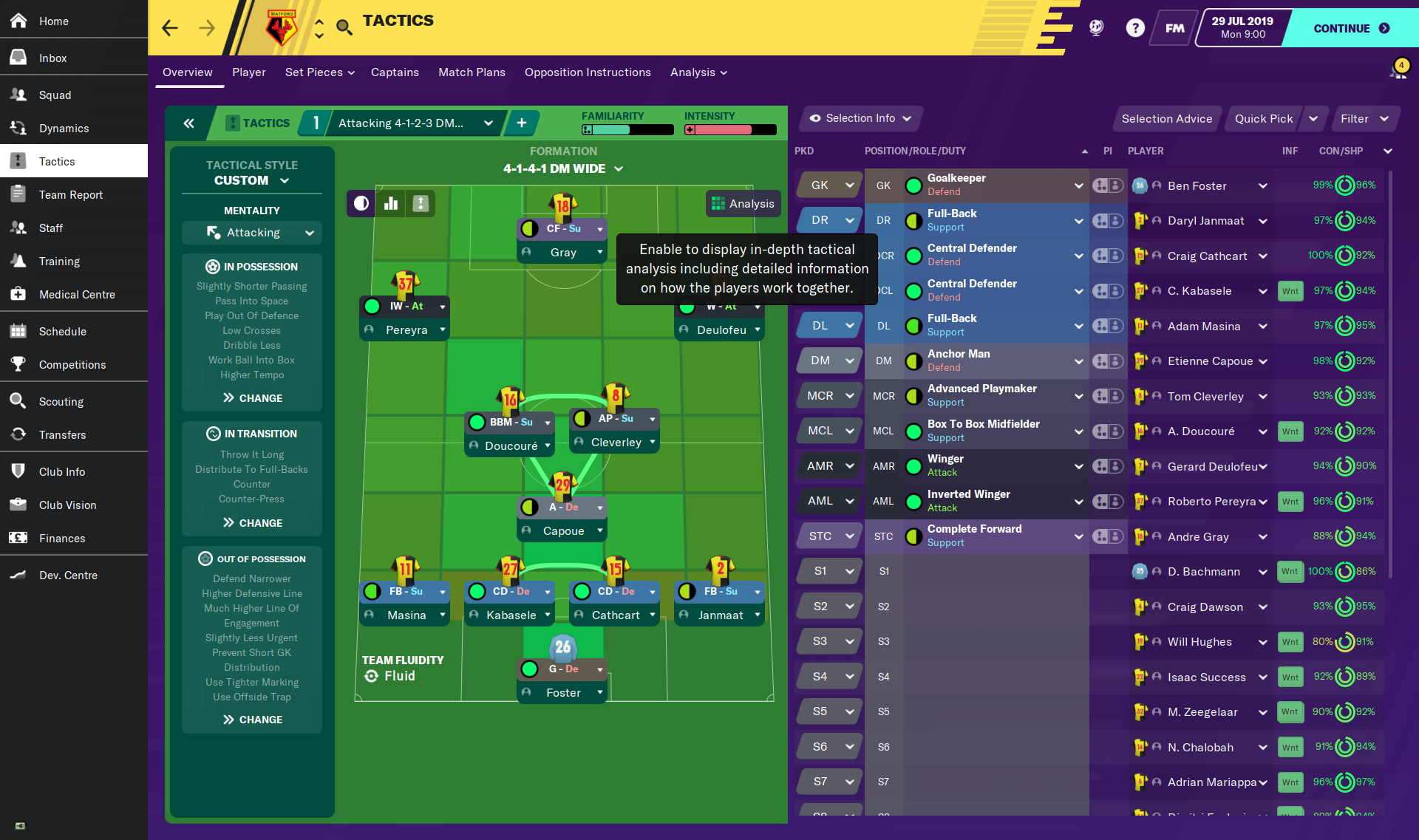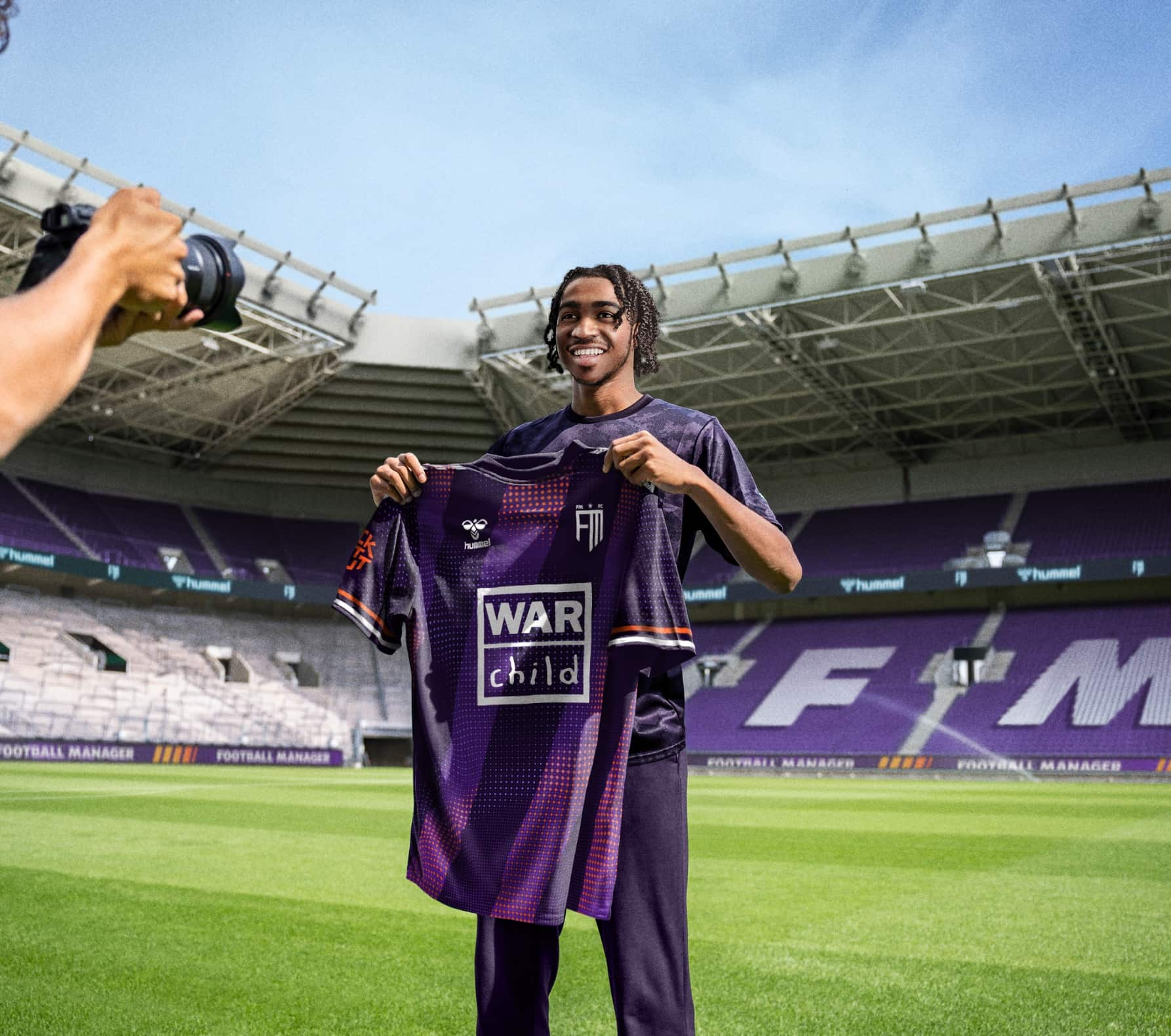The importance of 'In Transition' instructions | Wednesday Wisdom
@MerryGuido takes a look at transitions and, importantly, 'In Transition' instructions in FM20 so you can better manage the phase between defence and attack.
Football is a game of transitions, matches can be won or lost by switching quickly and successfully between attack and defence. Modern teams base their style of play on these transitional moments, making deadly counter-attacks a house specialty. This shift in style for many teams has been emulated by Football Manager; ensuring your tactical system is set up to give your team the best chance of taking advantage of mistakes in the transitional phases while similarly limiting your vulnerability is key to doing well in FM20.

So, what is a transition? A transition means moving from one phase of play to the next, by winning or losing the ball. For instance, when your defenders intercept a cross and bring the ball out from defence into midfield, the team is effectively entering a new phase of play. Your team has transitioned from its defensive shape to an offensive one.
The key to absolutely nailing these transitional phases is protecting the balance between offence and defence through what some coaches call ‘restverdediging’.
Restverdediging means the ‘remaining defence’ when you translate it literally.
When your team is transitioning from the defensive phase of play to the offensive phase, you want to ensure that there are still enough players behind the ball to snuff out counter-attacks when your team loses the ball. In essence, restverdediging asks the question: how many players do you keep back while there is an attack?
Transitions are key to controlling a match because they create chaos and whoever can control and manipulate that chaos has the advantage. The best way to prepare for a transition is to generate numerical superiority.
Making these transitions work requires some thought before constructing a tactic, as well as a fair dose of trial and error during pre-season. I use the following questions to help me in this process.
Defensive transition:
- When your team loses the ball, which players are returning to the defensive shape?
- What do the other players do? Are they restricting the space or are they trying to win possession back?
Consolidating:
- On winning the ball back, what are your players supposed to do?
- Do we maintain possession to allow for a gradual transition or break away rapidly for a counter?
Offensive transition:
- Do you have players making penetrative runs, breaking through the opposing lines into space?
- When your team loses the ball, will there be enough players behind the ball to stop a counter-attack?
When I start drawing up the way we set out to transition, I start with the defensive transitions. When we lose the ball, what is supposed to happen? Which players are supposed to drop back (or have stayed back) to take up their primary defensive positions? What do the other players do? Will they bunch up in the middle to restrict space or will they actively try to win the ball back? You can, of course, mix this up and have some players try to win the ball back while others take up a more supportive role by constricting space.
Upon winning the ball back, we need to figure out what to do with it. Will we keep possession for a while, allowing for a gradual, patient transition to a more offensive phase? Or will we go for a more rapid transition, opting for a quick and direct counter-attack?
Finally, when we are attacking, we need to consider which players are going to make forward runs to penetrate the opposing defensive line. These players will be out of position when we lose the ball, so, for the sake of balance, we have to consider our ‘restverdediging’; which players will remain behind to snuff out counter-attacks?
These are questions I ask myself when setting up a tactic and going through the first games in pre-season.
Transitions are incorporated into the tactics screen in FM. In this screen, you can select the various options that impact the team during its transitional phases from offence to defence or vice versa.

This is where we set up how our team reacts during transitions. The first panel essentially determines the way the team presses. Pressing is basically moving your players into a position where they can generate pressure on the opposing team with the intent of getting the ball back. The keyword here is “intent.” This makes the difference between the two options.
When your team is pressing, they are actively trying to win the ball from the opposing side by moving out of position and/or actively disrupting the formation of the opposing team. The ‘Counterpressing’ option basically generates this effect. If a team moves close but their intent is not to win the ball but merely to contain the opposing team, that is not pressing, that is what the ‘Regroup’ option does. Your team’s intention is to defend their own goal by stopping the opposition from getting into positions where they can take a shot, without actively trying to win the ball.
Similarly, when you win the ball, the second screen determines how the team intends to move forward, again with intent being key. The ‘Counter’ option will ask your players to immediately go on the attack after winning possession, trying to use the opposition’s transitional phase to their advantage. Selecting ‘Hold shape’ will result in a more considered and patient approach, keeping the ball and retaining formation before building another attack.
If you think that these boxes will enable you to figure out the transitions in the game, then you are setting yourself up for a disappointment. Setting up a successful style of transitioning goes beyond ticking or unticking a few boxes in a menu. The player roles and the very formation are also integral parts to consider.
To help give you a better understanding of where your tactic’s strengths and weaknesses are, you can toggle the Analysis mode on the top right of the screen.

The Analysis mode merely offers an indication of potential problems.
For the player roles, you want to look at the distribution of roles across the pitch and the movement that is typical for each role. Ideally, you want to set up horizontal and vertical lines within the tactic, players co-operating and acting as a unit.
So, that’s a delve into the world of transitions and the ways you can use them to increase your team’s attacking threat and ensure that you’re not caught out on the break. Whether you look to counter-press and break quickly or take a more steady, cautious approach the way you play during transitions and how that matches up with your team’s strengths can be the difference between success and failure on the pitch in FM20.




JOIN THE SQUAD
GET REWARDED
Sign up for FMFC to get exclusive feature drops and game updates, personalised content, plus member-only rewards and incentives.
Already a member? Sign in now

















































